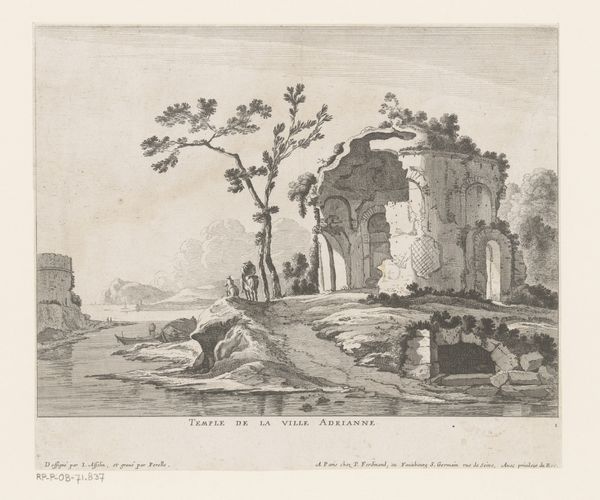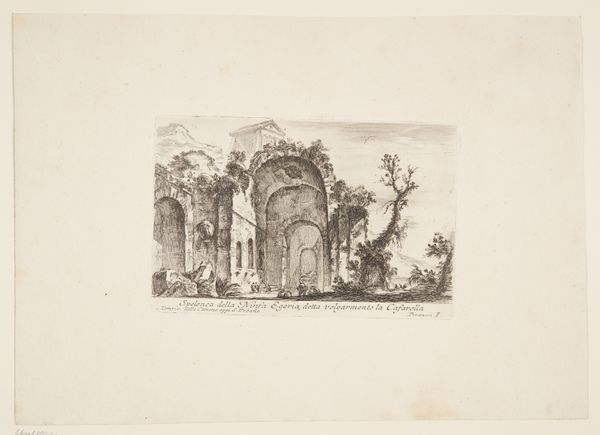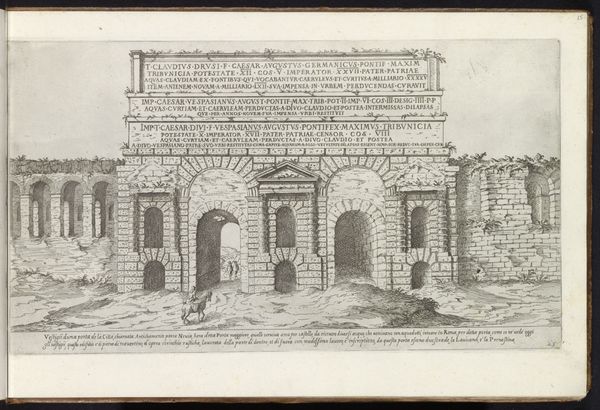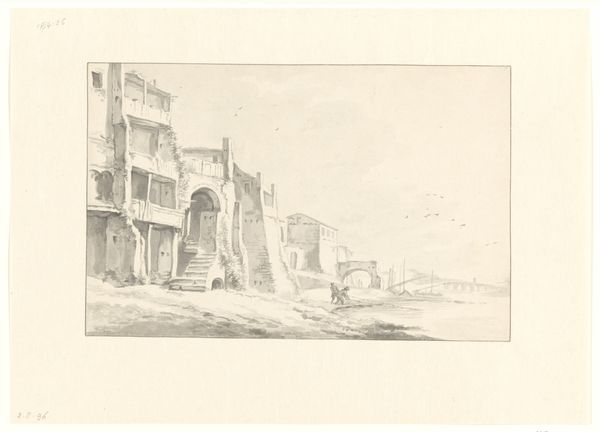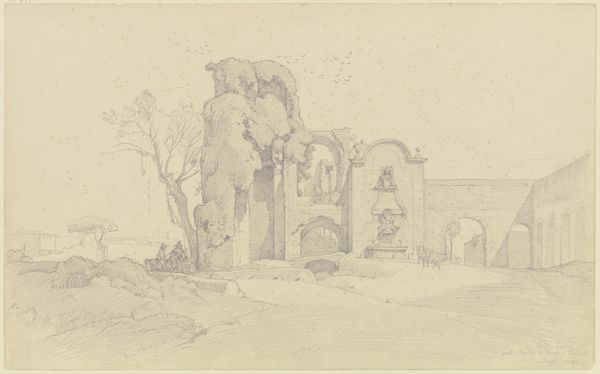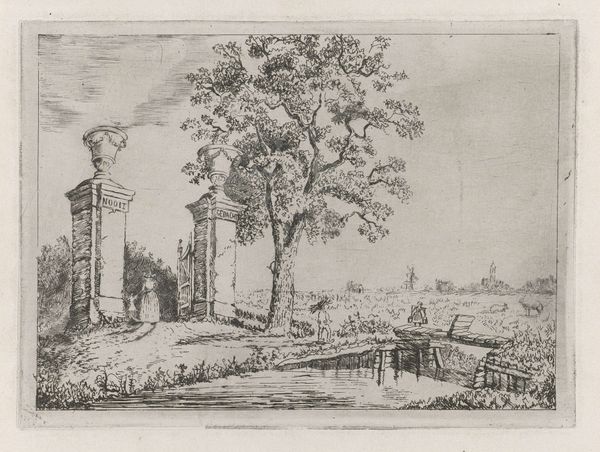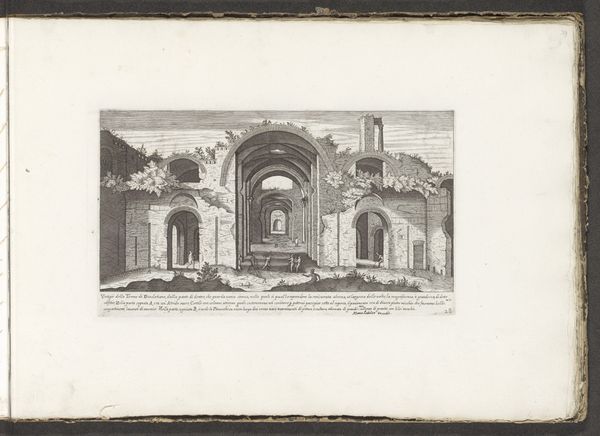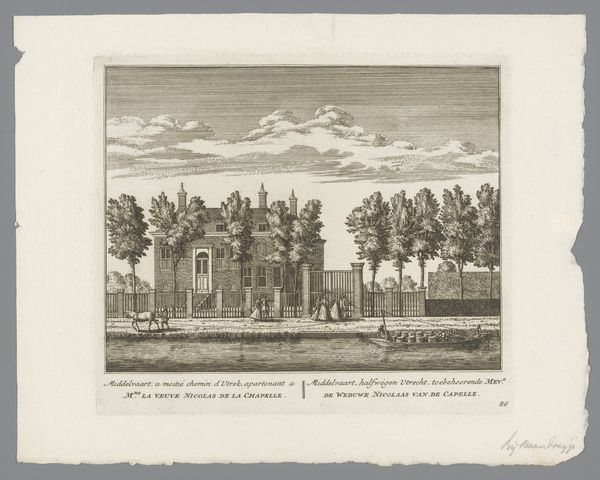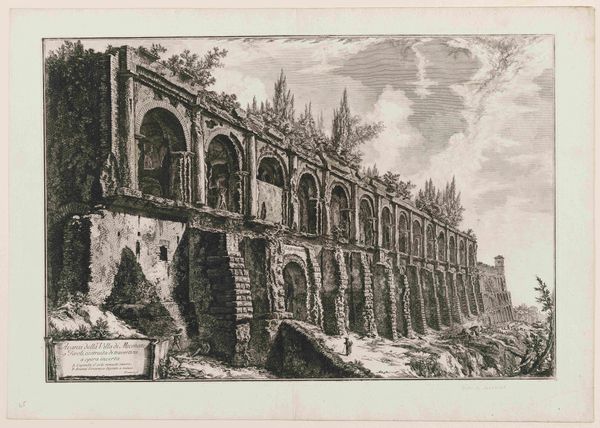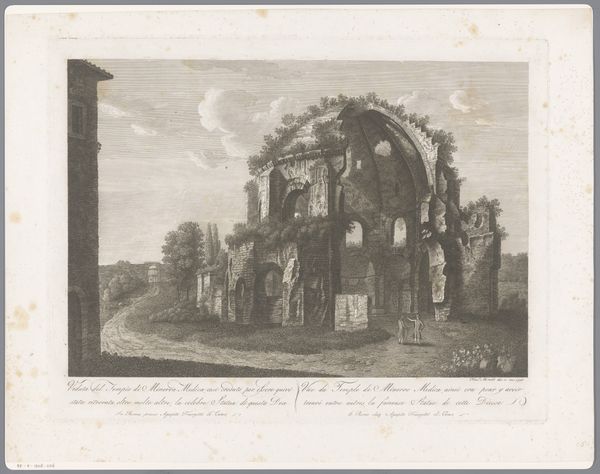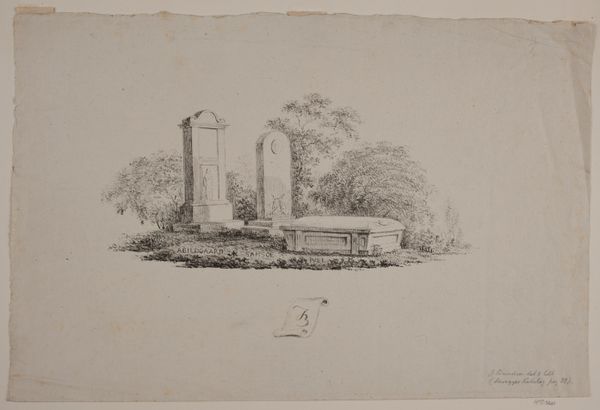
print, etching, architecture
# print
#
etching
#
old engraving style
#
landscape
#
etching
#
romanticism
#
history-painting
#
architecture
Dimensions: height 256 mm, width 412 mm
Copyright: Rijks Museum: Open Domain
Curator: Standing before us is H. Scholten’s 1824 etching, “Landschap met ruïne van een kerk te Bergen"—Landscape with ruins of a church at Bergen. Editor: It's immediately striking. The skeletal remains of the church dominate, a sombre grey against a washed-out sky. There’s such an aura of decay, really pulling at you. Curator: Absolutely. What interests me is the romanticization of ruination. Scholten made this during a period where the rise of Dutch nationalism created new social, economic and political contexts around heritage. The church becomes more important in its degradation. Editor: Interesting! It looks to me like this was rapidly sketched using different applications of the needle with a pretty thin ink, which would reflect the cheapness of the material but perhaps would offer wider access for middle class collectors, interested in that new heritage idea. Curator: Indeed. And think about the consumption of imagery itself. The very act of creating this etching, of making it reproducible, suggests an intention to disseminate this image of national history and, arguably, national identity, quite broadly. We have this symbol being consumed by the rising middle class, who in turn define themselves through this nostalgic perspective on the past. Editor: And it begs the question—whose history is being remembered and reproduced here? A ruined church symbolizes, well, ruin. So the building no longer serves it original purpose, but is adapted. If this work had been a painting it would become a far grander thing, for the upper classes alone to ponder over. The creation of an accessible art form actually creates room for an artform for all, or that’s the hope at least. Curator: That tension—between the materials, the audience, and the social context—is exactly where the artwork's power lies, I think. I hadn't considered it in quite that way before. Editor: Yes. Well, thank you. I have much to think about regarding how the socio-economic context drove an interest in what this church really means.
Comments
No comments
Be the first to comment and join the conversation on the ultimate creative platform.

